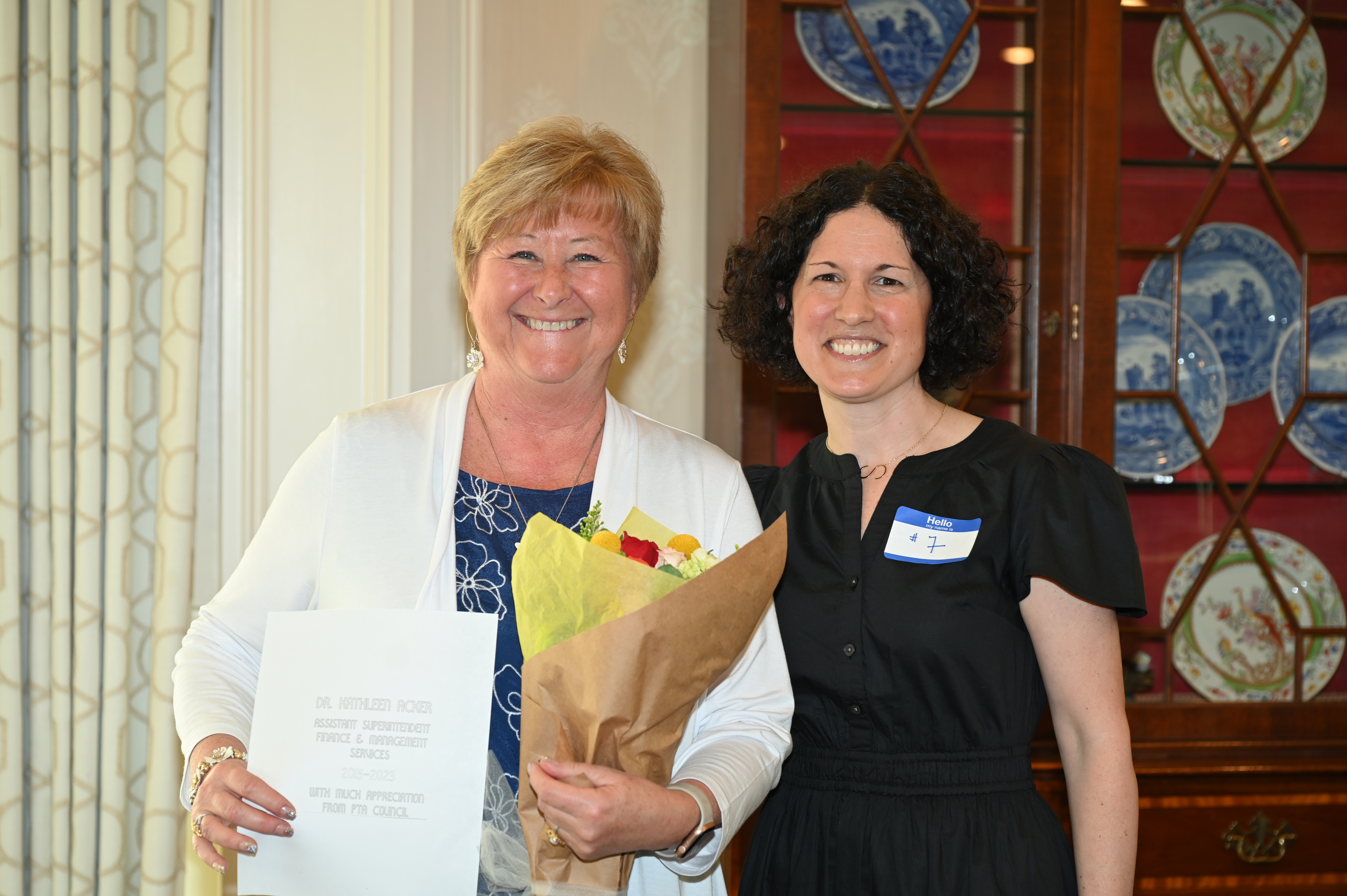Huntington PTA Council Executive Board Returning
June 7, 2023
The Huntington PTA Council’s annual awards luncheon at the Huntington Country Club was a festive gathering on Thursday afternoon. The existing slate of executive board members have all signaled their willingness to return so the group will continue its work uninterrupted.
The end of year luncheon is a Huntington tradition. It celebrates the success of individual building PTA units, which raised tens of thousands of dollars to support a long list of activities.
The 2023/24 PTA Council will once again be led by President Sara Baliber, co-Vice Presidents Colleen Perfetto and Jennifer Tullo, Recording Secretary Mariam Murtaza and Treasurer Carolina Addeo.
Several individuals were honored during the luncheon, including retiring Superintendent James W. Polansky and Assistant Superintendent Dr. Kathleen Acker as well as longtime PTA official Michele Sabatino who is also “retiring” from the organization following the graduation of her youngest child.
All but one of the eight PTA Council presidents who worked with Mr. Polansky over the past 12 years were on hand to wish him well in his retirement.
The Origins of Huntington’s PTA
Huntington UFSD has one of the longest and proudest traditions of any district in the country. For 100 years, the Parent Teacher Association, or PTA as it is widely known, has been an active partner with the educational professionals responsible for educating the tens of thousands of students who have moved through district classrooms.
The forerunner of Huntington’s PTA was formed in 1923 at what was then known as Lowndes Avenue School in Huntington Station. After the building was doubled in size over parts of 1926/27, the school was renamed in honor of former President Theodore Roosevelt. The dedication ceremony drew dignitaries from across the town and was even attended by Mr. Roosevelt’s widow, Edith and his fifth child, Archibald.
Nucleus of Parents Met in 1923
“The nucleus of the first PTA of Lowndes Avenue School/Roosevelt School, consisting of about six parents, met together in Room 115 to discuss ways and means of providing free milk to a large number of undernourished children whose parents were economically unable to supply their children with the necessary amount of milk for good health,” wrote Roosevelt Principal Agnes B. Bailey in 1958. “This was about 1923.”
The parent’s milk campaign was the start of something special in Huntington. “At this time we were buying milk in quart bottles (retail price) and serving it in paper cups,” wrote Mrs. Bailey. “The front of our auditorium was the area used for this purpose.”
The group’s first organized fundraiser was a roast beef dinner prepared and served on the second floor of the old four-room School Street School. It was located across the street from the current Jack Abrams School parking lot (the one with the basketball courts on the south side of the building).
Parents from Two Schools Affiliate
After a period of rapid enrollment growth, Lincoln School was erected on E. 9th Street in Huntington Station adjacent to St. Hugh of Lincoln Roman Catholic Church in 1923/24. (Woodbury Avenue Grammar School was built at the same time.)
By 1925 the parents of Lincoln’s students had affiliated with parents from Lowndes Avenue School to organize the district’s first PTA. “The first two years this organization included parents and teachers from both Huntington Station schools,” according to Mrs. Bailey.
By 1927 “the parents in Roosevelt School felt they could do more for our children working as a separate unit, so they withdrew and formed their own PTA,” wrote Mrs. Bailey, who served the district as a principal for 36 years, longer than anyone else.
“Our PTA over many years has contributed much to the welfare of our children,” wrote Mrs. Bailey. “I recall programs of free milk when needed, graham crackers with milk for all children, [and] the purchase of a radio. During the war, a program was set up to supplement family budgets; in some cases eyeglasses, tonsillectomies, and many other necessary and worthy causes.”


